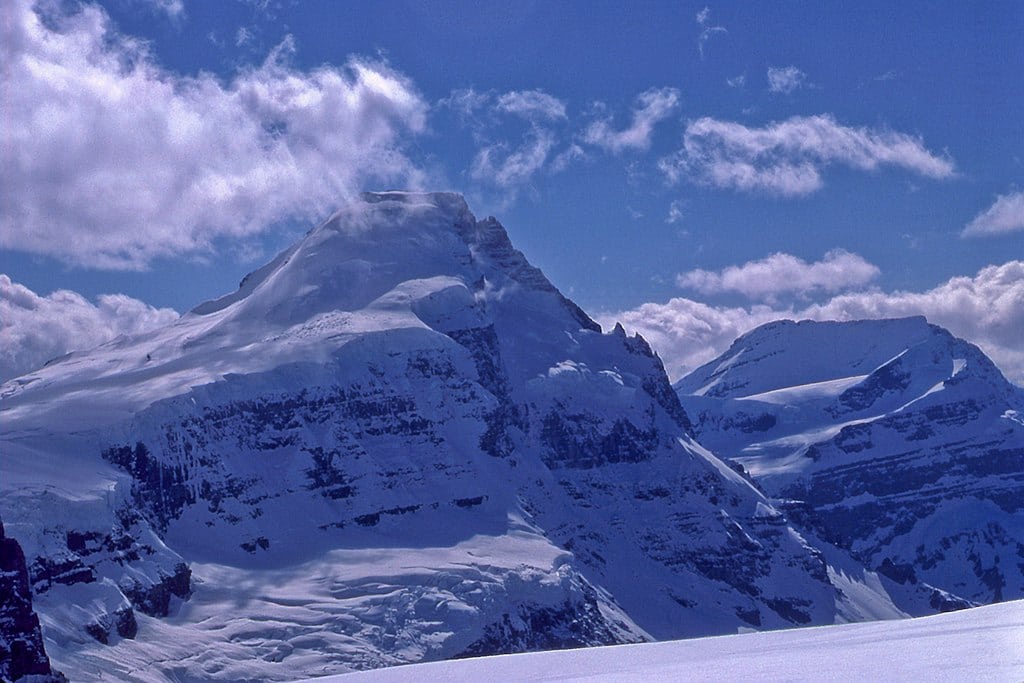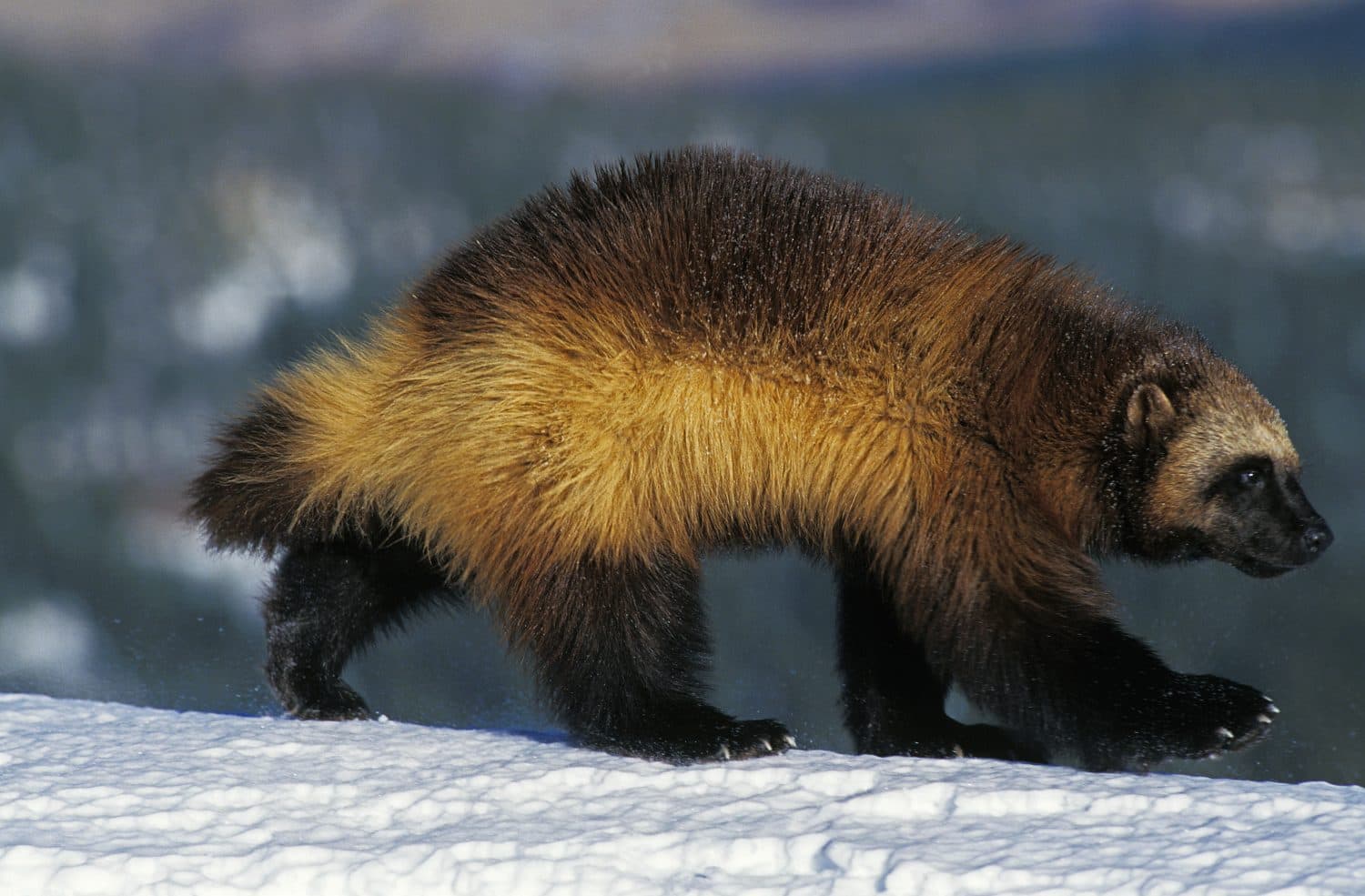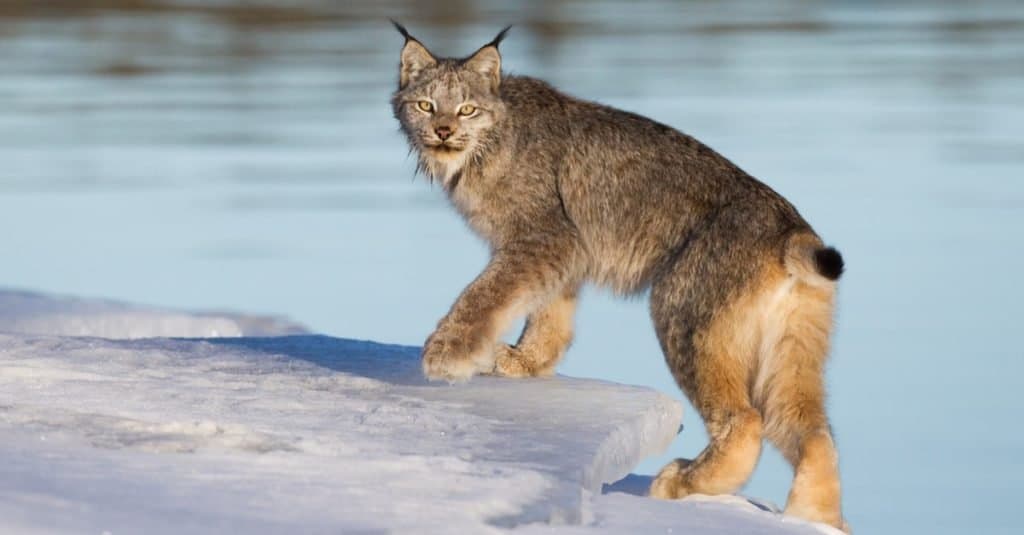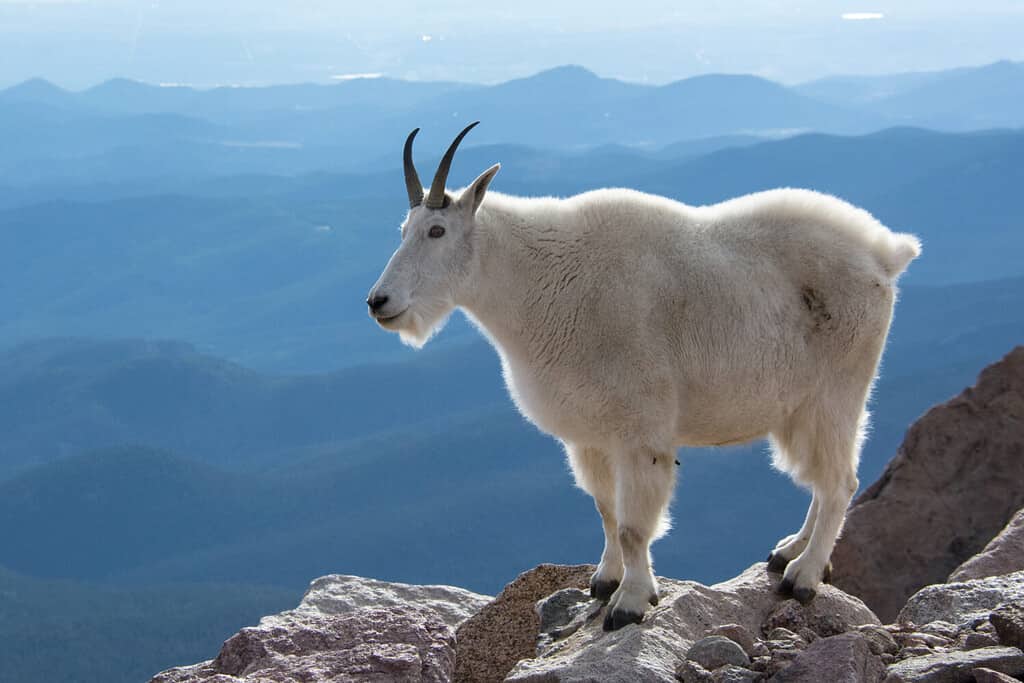Alberta is a Canadian province located east of British Columbia, west of Saskatchewan, and south of the Northwest Territories. While eastern Alberta is part of the Great Plains region of North America, western Alberta is in the northern Rocky Mountains, also called the Canadian Rockies. The Canadian Rockies run north to south along the border of Alberta and British Columbia. Deep in this massive mountain range lies the highest point in Alberta. This article explores that point, including its geographical history and the fascinating animals that live there.
The Highest Point in Alberta

The Canadian Rocky Mountains are the northernmost stretch of the massive Rocky Mountains range.
©Krishna.Wu/Shutterstock.com
Alberta’s highest point lies at the top of a massive mountain in the Canadian Rockies. This mountain is on the border of Alberta and British Columbia; however, its summit is in Alberta.
At 12,293 feet (3,747 meters) above sea level, the highest point in Alberta is the summit of Mount Columbia. Let’s explore the geographical history and fascinating wildlife of this massive mountain.
Geography of Mount Columbia

Mount Columbia is part of the Columbia Icefield, a 125-square-mile region of interconnected glaciers.
©BrettA343, CC BY-SA 4.0, via Wikimedia Commons – Original / License
The Rocky Mountains are one of the oldest mountain ranges in western North America. Since Western North America is younger than Central and Eastern North America, geographically speaking, its mountain ranges are younger as well. For example, the Olympic Mountains of Washington state are only 57 million years old, while the Appalachian Mountains of Eastern North America are 1.2 billion years old. Western North America’s mountain ranges, however, tend to be taller and more glaciated, because they have not been shortened by as many millions of years of erosion and rainfall.
According to research from the University of Alberta, the Canadian Rockies began to form 100 million years ago when North America collided with a microcontinent to the west. Since the earth’s tectonic plates are so massive and dense, when they collide, they crumple and fold, creating mountains.
The Canadian Rockies are primarily composed of shale and limestone; however, they also contain some incredibly old rocks that even predate them becoming a mountain range. Some of the sedimentary rock and argillite in the Canadian Rockies dates back to the Precambrian era, which lasted from 4,540 million years ago to 542 million years ago.
Wildlife Near the Highest Point in Alberta
Alpine environments are home to unique plants and animals adapted to live in their unique harsh conditions. Let’s explore some of the fascinating animals that live in the rugged, freezing alpine environment of the Canadian Rockies.
Wolverine (Gulo gulo)

The Latin name “gulo” means glutton, referring to the wolverine’s carnivorous diet.
©slowmotiongli/Shutterstock.com
Wolverines are fascinating and elusive animals native to the northern hemisphere. They are the largest members of the weasel family, Mustelidae, which also contains otters, badgers, and weasels. Wolverines are largely solitary, meaning they live alone, and they require a large range to roam. While wolverines have a reputation as ferocious predators, they will also eat carrion (animals that are already dead). Wolverines prey on large mammals such as caribou, mountain goats, and moose, as well as small mammals such as marmots.
Canada Lynx (Lynx canadensis)

The Canada lynx is easy to recognize by its long, black ear tufts and stubby, black tail.
©Jukka Jantunen/Shutterstock.com
The Canada lynx is a feline (family Felidae) native to northern North America. Canada lynx are adapted to live in the snowy conditions of alpine environments. Their dense fur keeps them warm, while their large paws help them walk in the deep snow. Canada lynx are predators, and their main prey species is the snowshoe hare. As a result, the Canada lynx population fluctuates in relation to the snowshoe hare population.
Mountain Goat (Oreamnos americanus)

Found only in alpine environments, mountain goats are adept at navigating steep, rough terrain.
©Eivor Kuchta/Shutterstock.com
Mountain goats are endemic to western North America, meaning it is the only place they live. They live in incredibly high elevation environments, often staying above the tree line in summer and moving to slightly lower elevations in winter. Mountain goats are herbivores, and their diets consist of plants, mosses, and lichens. Additionally, mountain goats lick rocks in order to get essential minerals into their diets.
What Are Alberta’s Highest Peaks?
Mount Columbia is the highest point in Alberta, followed by North Twin Peak, Mount Alberta, Mount Assiniboine, and Mount Forbes. Here are the five highest peaks in Alberta along with their heights above sea level.
| Rank | Mountain | Height (Feet) | Height (Meters) |
|---|---|---|---|
| 1 | Mount Columbia | 12,294 | 3,747 |
| 2 | North Twin Peak | 12,240 | 3,730 |
| 3 | Mount Alberta | 11,873 | 3,619 |
| 4 | Mount Assiniboine | 11,864 | 3,616 |
| 5 | Mount Forbes | 11,850 | 3,612 |
What Is the Highest Point In the Canadian Rockies?
At 12,972 feet (3,954 meters) above sea level, Mount Robson is the highest point in the Canadian Rockies. Mount Robson is located in British Columbia, near the border of Alberta.
The photo featured at the top of this post is © iStock.com/Leamus
Thank you for reading! Have some feedback for us? Contact the AZ Animals editorial team.







